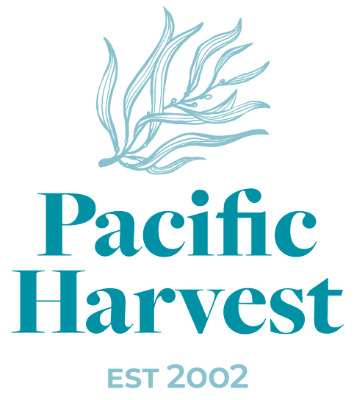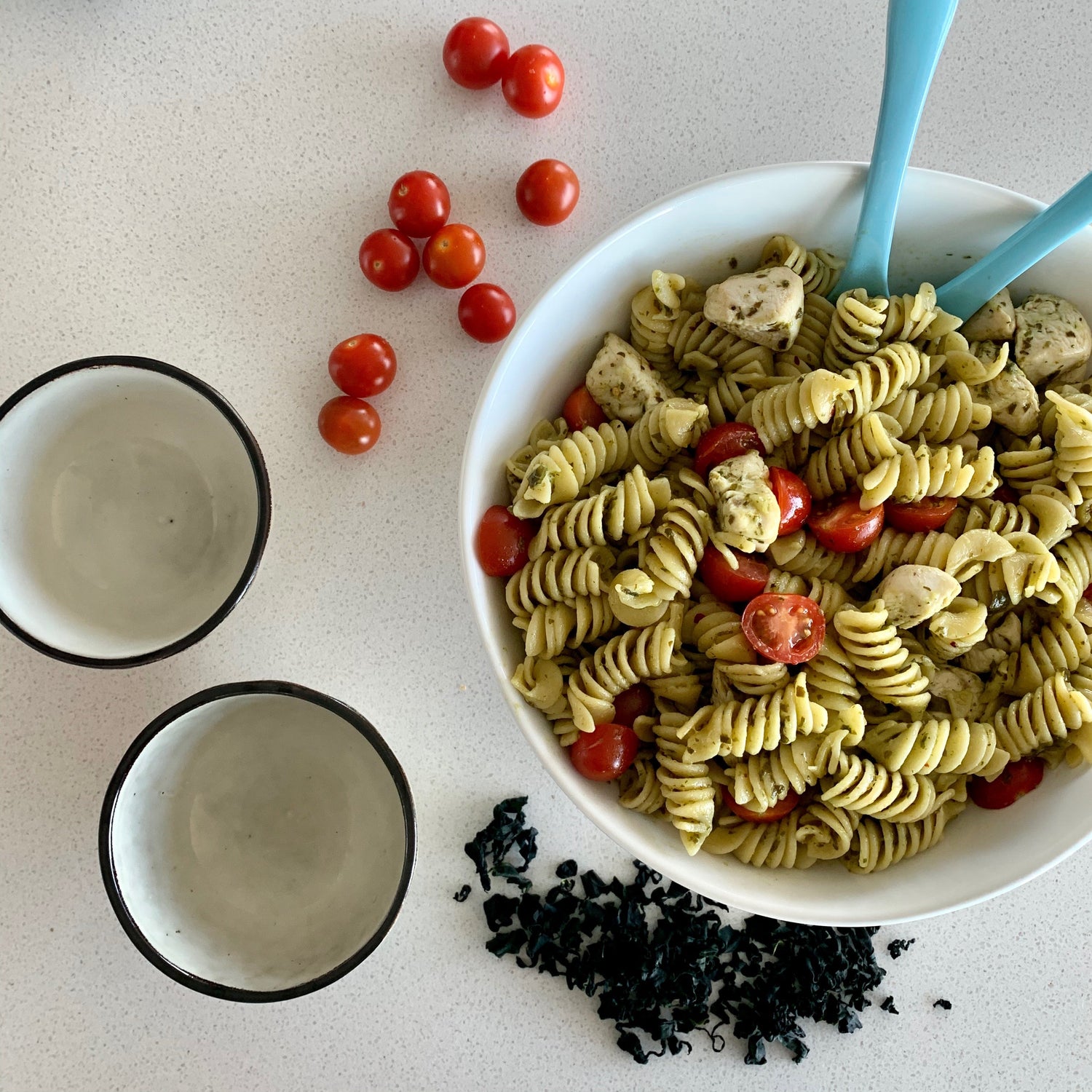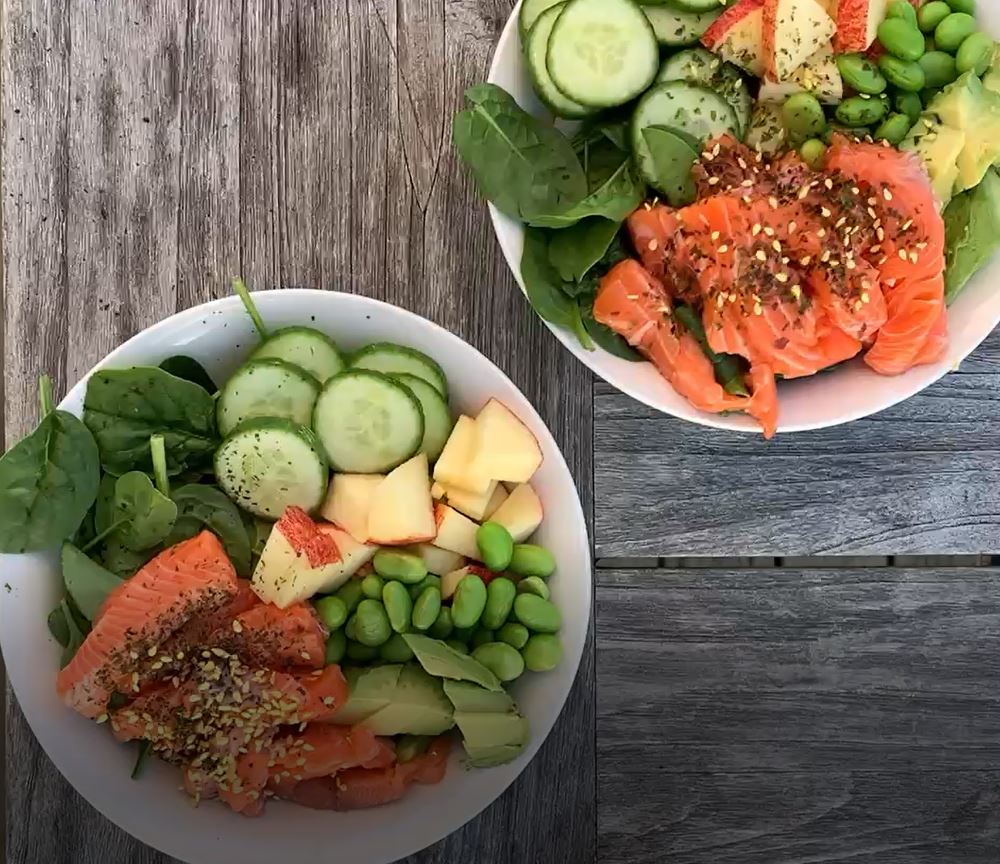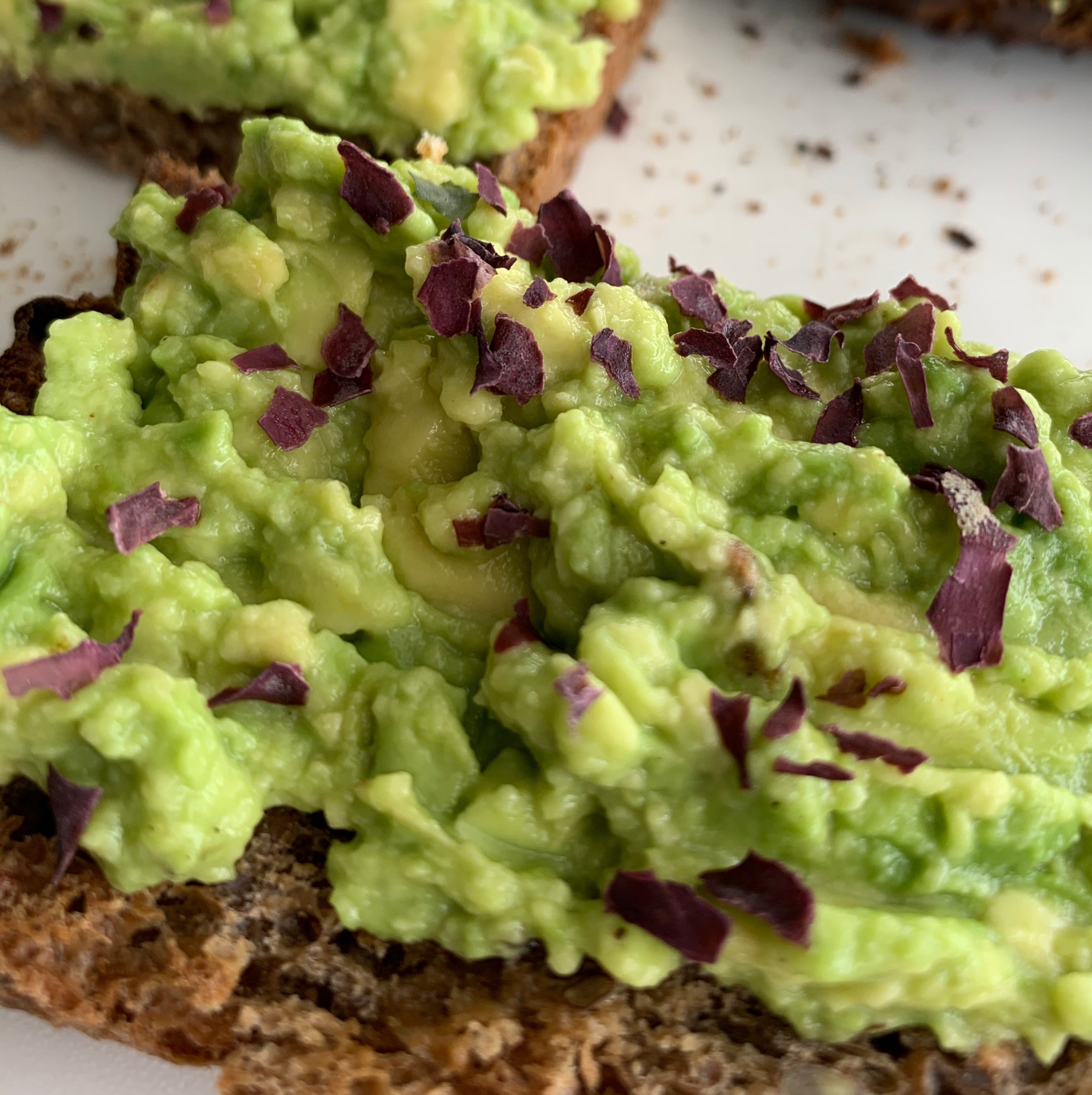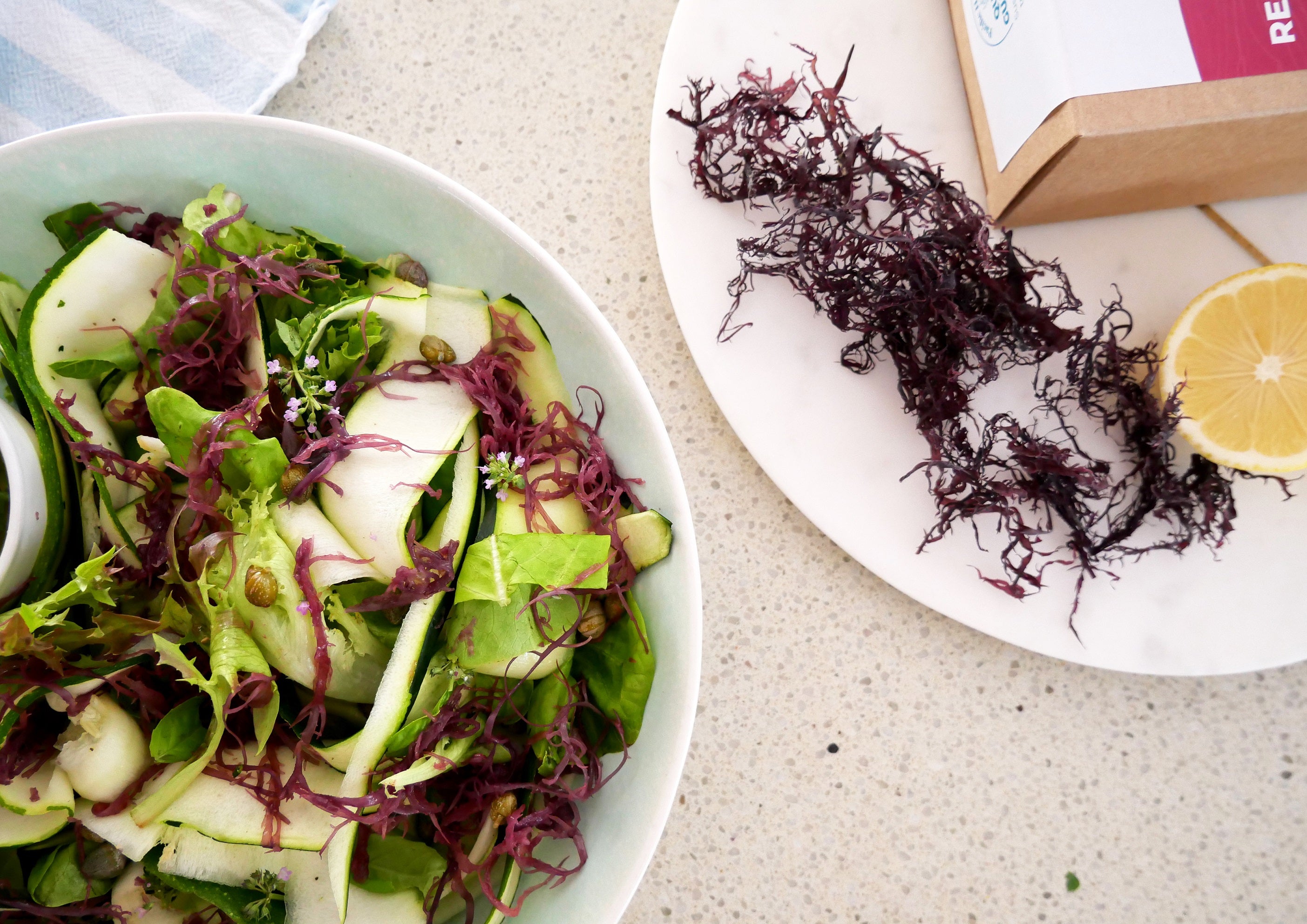The culinary versatility of wakame is endless. Learn more about it and discover our top 7 favourite ways to use wakame seaweed in everyday meals, as well as a few tips and tricks to get the best from it.
We’d describe the culinary profile as follows:
- Colour - Wakame fronds tend to be deep green like spinach, and this can change as you soak it. Pacific Harvest’s wild wakame (harvested in NZ) is more khaki, farmed wakame (sustainably farmed in China*) has been blanched and chopped for your convenience and is darker and more uniform in size.
- Flavour - Wakame has a mild, soft and subtle flavour - slightly sweet with a fresh salty sea aftertaste
- Texture when moist is silky with a slight bite to it, lending them to many applications in a variety of dishes.
Download our wakame recipe brochure or explore these ideas through our recipe collection.
Here are our 7 favourite ways to use Wakame daily:
- Add to Stir-fries: Add the re-hydrated leaves or fronds to a stir fry with soba noodles, fish, mushrooms, daikon or other vegetables. Use it as you would any other green vegetable
- In Asian-style salads: Rehydrate the wakame seaweed and add sesame seeds and a simple Asian dressing to create the delicious seaweed salad you can buy in sushi shops
- Chop into Poke bowls and soups: Combine with noodles, grains, shrimp and avocado for a filling and nutritious meal. Make your own miso soup!
- Mashed potato or fish cakes: Add the chopped leaves to the mashed potato as a side dish or croquettes or potato patties to combine with smoked fish and make into fish cakes.
- Baking: For a savoury depth in baking, add finely chopped leaves or fronds to biscuit or bread dough, or even cake batter if you’re keen to experiment!
- Butter: Add finely chopped wakame seaweed to softened salted butter for an umami spread, dip for sourdough bread, or even on top of the steak.
- Wrapping Fish: Use the whole leaves to wrap around the fish before steaming or baking for a succulent finish.
Visit our seaweed recipe page for more culinary inspiration. Wakame flakes may be a more accessible format to work with - this is raw wakame seaweed milled into small flakes, which can be sprinkled into almost any meal for added flavour and nutrients.
How to use wakame seaweed
Wakame is best preserved in its dry state, so only rehydrate the leaves or fronds you need. To rehydrate wakame, soak it in water for 3-5 minutes (it will expand 6-10 times its dried size). Since the soaking water is sweet and full of nutrients, don’t throw it out! Drink the water yourself, use it as a base for stocks, and soups, or give it to your pets and house plants.
Try soaking wakame in a stock, herbal/fruit tea or flavoured water to experiment with flavour.
Wakame doesn’t need to be cooked. In fact, it retains all of its vitamins and natural enzymes in its raw state, so we get the full benefit when we consume it. Dry wakame leaves can be chopped raw into meals, or use our wakame flakes for your convenience.
Wakame offers a plant-based source of umami taste - the white powdery substance you may see on a wild harvested wakame leaf is glutamine, an amino acid that naturally occurs in Wakame and will rise to the surface of the leaf as it dries in the air. Some mistake this for mould, but it is, in fact the source of the fantastic umami flavour, and when you use this seaweed in your meal preparation, it will impart a wonderful depth of flavour as well as dense nutrients and minerals.
Please note Wakame is not native to New Zealand, but it grows well here in our marine environment and climate. It is actually considered a ‘marine pest’, so by consuming it, you are creating a circular solution to solve this problem! Thank you for being so supportive!
The rising popularity of Wakame in Western menus
Although wakame has been a staple in kitchens across Asia for centuries, it was not until the 1960s that it started to spread to the West, starting off with health and Asian grocery stores, gradually becoming more mainstream. The influence of the macrobiotic movement and the growing number of Japanese restaurants and sushi shops across Australasia in the last few decades have increased awareness of wakame.
As we research this seaweed and understand its nutritional value more deeply, there is also a growing marketing of wellness devotees who value wakame's superior dietary credentials.
*All our seaweeds are tested for contaminants regardless of where they come from, in accordance with the ANZ Food Code.
Learn about Wakame's fantastic health benefits.
